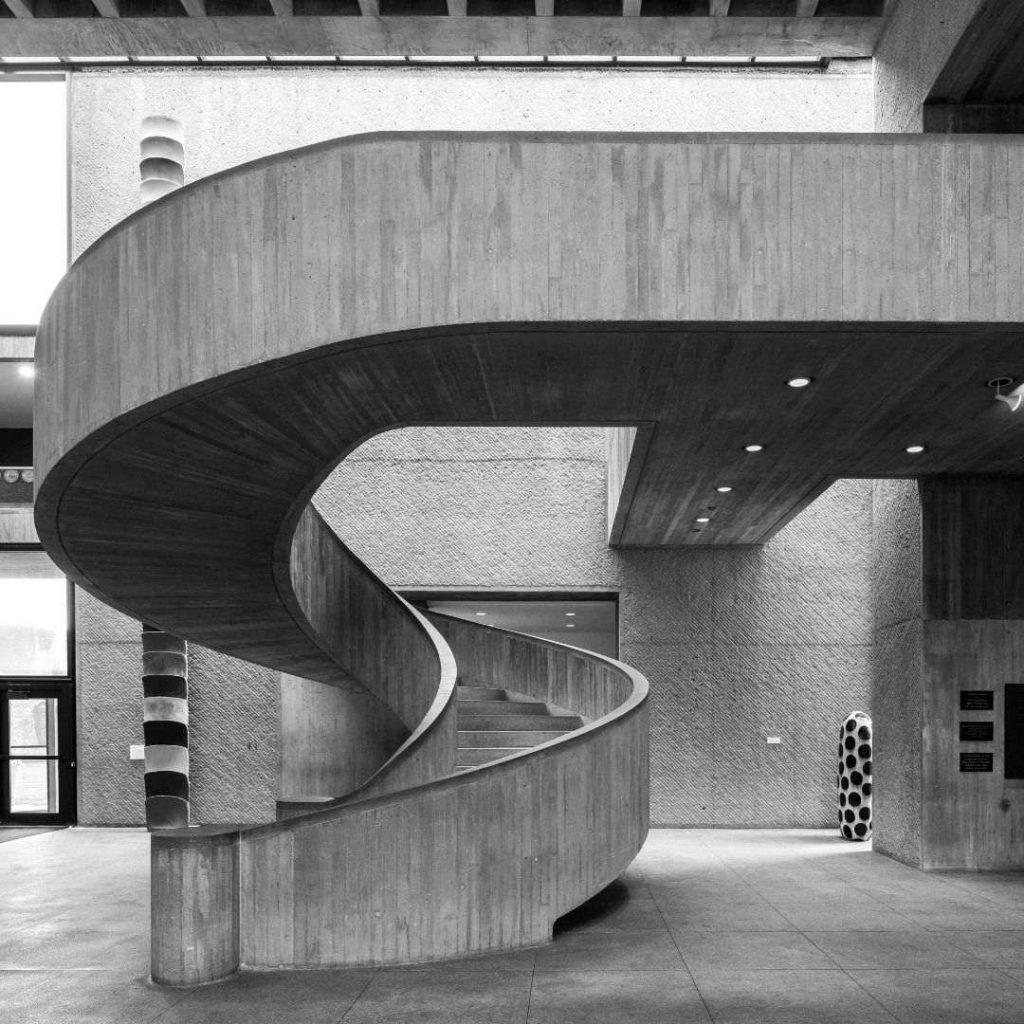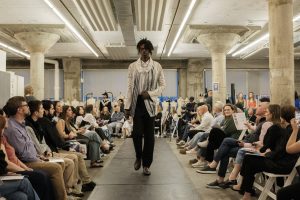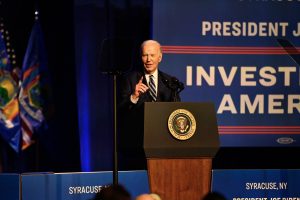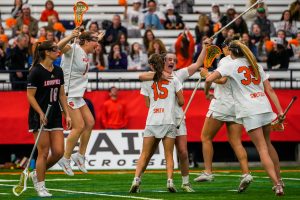Syracuse art museums manage re-opening with COVID-19 precautions
NY art museums tackle re-opening

At a time when sanitizing and masking-up is crucial, going to a museum to check out art looks very different than it did seven months ago. As the COVID-19 pandemic continues, museums have been slowly reopening to the public under social distancing guidelines, and visitors are forced to adapt to new ways of viewing exhibitions.
Two of Syracuse’s museums, the Everson Museum of Art and the Erie Canal Museum, reopened to the public on August 1, but the in-person experience isn’t quite the same as it was pre-pandemic. Visitors at the Everson, a contemporary art museum located downtown, must get their temperature checked at the door, wear a face covering at all times, and sanitize their hands frequently.
Kristin Sheehan, Everson’s marketing and public relations coordinator, said these social distancing guidelines are the “new normal,” including the museum’s reduced hours, only opening from Thursday through Sunday when it was previously open five days a week. Friday and Saturday from 10 a.m. to noon are now reserved for members and high-risk individuals.
Sheehan added that the Everson has not yet seen the same number of visitors as before the pandemic, with only one-third of the normal number of visitors coming back unless another special event is happening downtown as well.
“On days when there’s been coinciding events such as City Market or the Food Truck Fridays or some other things happening, we’ve definitely gotten more traffic to the museum,” Sheehan said.
When the Everson shut down in March, its exhibits were moved online as well as other events such as an object study and yoga classes. Several events have remained online, even as the museum reopened.
“It’s kind of weird because we switched everything to virtual programming when we shut down, but now that this is kind of the new normal,” Sheehan said. “We have even our virtual things in our events section, and even our outreach and classes are now in our normal ‘learn’ section.”
Another local Syracuse museum, the Erie Canal Museum, has had to make similar changes. The museum can only permit 25% of its normal visitation capacity and has set up a time ticketing system where visitors reserve a slot by time and date before coming. Vicki Krisak, the director of communications and outreach, said masks are required at all times and the museum has implemented the six feet social distancing rule, in addition to doing extra cleaning and sanitizing. Krisak also said the staff is still able to work as usual.
“We have a schedule because there have to be at least two people in the building at all times,” Krisak said. “We can work remotely, but we don’t have to as long as we observe social distancing and all the other protocols.”
The Erie Canal Museum also features several digital exhibits on its website, including one of the model canal boats submitted in a contest that was open to the public during the summer.
Museum visitors elsewhere in the state, such as New York City, are finding similar changes taking place.
Syracuse University alum Anna Gibertini, who is an articles editor for Dwell magazine, saw the differences firsthand when she visited the Metropolitan Museum of Art in Manhattan three weeks ago. Similar to the Erie Canal Museum’s protocol, she had to reserve a time slot ahead of time before visiting with a friend.
“I was anticipating it not being as crowded and not feeling like how it would, or how it used to feel during pre-Corona time,” Gibertini said. “But it basically felt exactly the same.”
Gibertini also said although it felt somewhat normal at times, there were some parts of the museum closed off and people didn’t linger too long in front of art pieces, so the experience felt rushed.
“For me, it was a nice departure from this weird new normal that we live in,” Gibertini said.





